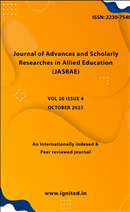Assessment of the extent of practice and need for training in regional anesthesia among anesthesiologists in Saudi Arabia
Keywords:
regional anesthesia, anesthesiologists, training, Saudi Arabia, surveyAbstract
Objective The purpose of this survey was to evaluate Saudi Arabian anesthesiologists' levelof practice necessity of further training in regional anesthesia in 2015. Methods We used a surveyadministered via the internet to learn more about regional anesthetic use among the 400anesthesiologists who presented at the two annual meetings of the Saudi Anesthetic Association.Concerns included the application of ultrasound guidance, the use of regional anesthetic, necessity oftraining workshops. Findings Of the anesthetists surveyed, 55.2 responded. The majority of theseprofessionals were men, with a mean age of 25 to 50. The majority of anesthesiologists (81) often usedregional anesthetic in operating rooms (68.6) as opposed to designated block rooms. Only 12.7 of therespondents completed a fellowship in regional anesthesia, but 5.5 had formal training 81 wereeager to attend workshops on the subject. The institutional positions of the ultrasound users theircorrelation with ultrasound (r=-0.191) were significantly correlated negatively (P=0.026). Conclusions Wefeel that more could be done to enhance the Kingdom of Saudi Arabia's use of regional anesthesia, suchas instituting formal training and holding more regular, specialized seminars and courses on the subject,using ultrasound-guided regional anesthetic blocking techniques as the primary focus.References
Tripković B. Postoperative delirium after regional anesthesia. Acta Med Croatica 2012; 66:23-7.
Steinmetz J, Funder KS, Dahl BT, Rasmussen LS. Depth of anaesthesia and post-operative cognitive dysfunction. Acta Anaesthesiol Scand 2010; 54:162-8.
Ilfeld BM, Mariano ER, Williams BA, Woodard JN, Macario A. Hospitalization costs of total knee arthroplasty with a continuous femoral nerve block provided only in the hospital versus on an ambulatory basis: A retrospective, case-control, cost-minimization analysis. Reg Anesth Pain Med 2007; 32:46-54.
Swenson BR, Gottschalk A, Wells LT, Rowlingson JC, Thompson PW, Barclay M, et al. Intravenous lidocaine is as effective as epidural bupivacaine in reducing ileus duration, hospital stay, and pain after open colon resection: A randomized clinical trial. Reg Anesth Pain Med 2010; 35:370-6.
De Oliveira GS, Ahmad S, Schink JC, Singh DK, Fitzgerald PC, McCarthy RJ. Intraoperative neuraxial anesthesia but not postoperative neuraxial analgesia is associated with increased relapse-free survival in ovarian cancer patients after primary cytoreductive surgery. Reg Anesth Pain Med 2011; 36:271-7.
Walker KJ, McGrattan K, Aas-Eng K, Smith AF. Ultrasound guidance for peripheral nerve blockade. Cochrane Database Syst Rev 2009;4:CD006459.
Al Harbi M, El Dawlatly A. How to set up a standard regional anesthesia service. Saudi J Anaesth 2011; 5:217-8.
Bubnov RV, Strokan’ AM, Abdullaiev RI. Comparative study of performance of lower extremities blocks under ultrasonography and nerve stimulator guidance. Lik Sprava 2011;1-2:126-31.
Tran de QH, Muñoz L, Russo G, Finlayson RJ. Ultrasonography and stimulating perineural catheters for nerve blocks: A review of the evidence. Can J Anaesth 2008; 55:447-57.
Delaunay L, Plantet F, Jochum D. Ultrasound and regional anaesthesia. Ann Fr Anesth Reanim 2009; 28:140-60.
O’Sullivan O, Shorten GD, Aboulafia A. Determinants of learning ultrasound-guided axillary brachial plexus blockade. Clin Teach 2011; 8:236-40








